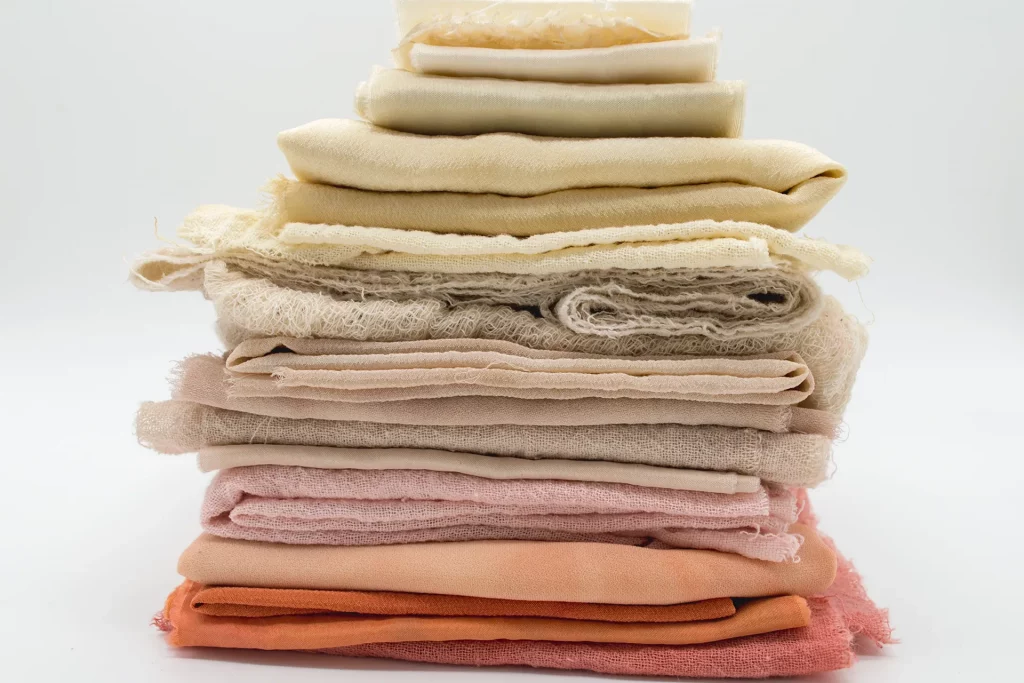Muslin is a lightweight, plain-woven cotton fabric that holds a special place in sewing and pattern making. It has been a trusted companion for seamstresses and pattern makers for centuries due to its versatility and affordability. Let’s explore the characteristics and uses of muslin in the world of fashion.

Characteristics and Types of Muslin
Muslin fabrics are typically made from unbleached or bleached cotton fibers, giving them soft and breathable characteristics. It has a plain weave, meaning the threads are woven in a simple over-and-under pattern. This procedure results in a balanced and durable fabric.
Muslin comes in various weights and densities, allowing for different applications. Lighter muslin is often used for creating prototypes. Heavier muslin can be utilized for linings or garment construction. Muslin can also be found in a range of colors, although natural and white variations are the most common.
The Role of Muslin in Pattern Making
Pattern making is a meticulous process that requires precision and experimentation. Muslin plays a crucial role in this stage, as it allows pattern makers to create test garments called “muslins” or “toiles” before cutting and sewing with the final fabric.
Muslins are essentially mock-ups of the intended garment, created using inexpensive muslin fabric. They provide an opportunity to assess the fit, drape, and overall design of a pattern before committing to the final fabric. Pattern makers can make necessary adjustments, such as resizing, modifying seam lines, or altering the silhouette, based on the muslin’s evaluation.
Benefits of Using Muslin
Using muslin in the pattern making process offers several advantages:
- Cost-Effective: Muslin is an affordable fabric, making it an economical choice for creating multiple iterations of a pattern.
- Easy to Manipulate: Muslin is easy to cut, sew, and shape, allowing pattern makers to experiment with modifications and alterations with relative ease.
- Drape and Fit Evaluation: The lightweight and neutral properties of muslin enable pattern makers to assess how the garment falls and fits on a dress form or a live model.
- Seam Line Visibility: Muslin’s plain weave makes it easier to see and adjust seam lines, ensuring accuracy in the pattern.
- Opportunity for Design Changes: Muslin provides the flexibility to test different design elements, such as collars, sleeves or embellishments, without using expensive or precious fabrics.
Conclusion
Muslin fabric has long been an indispensable tool in the realm of sewing and pattern making. Its affordability, versatility, and easy-to-work-with nature make it a perfect choice for creating muslins or toiles during the pattern development process. By utilizing muslin, seamstresses and pattern makers can refine their designs, achieve optimal fit and drape, and bring their garment visions to life with confidence. Embrace the power of muslin and unlock the endless possibilities it offers in the world of sewing.



